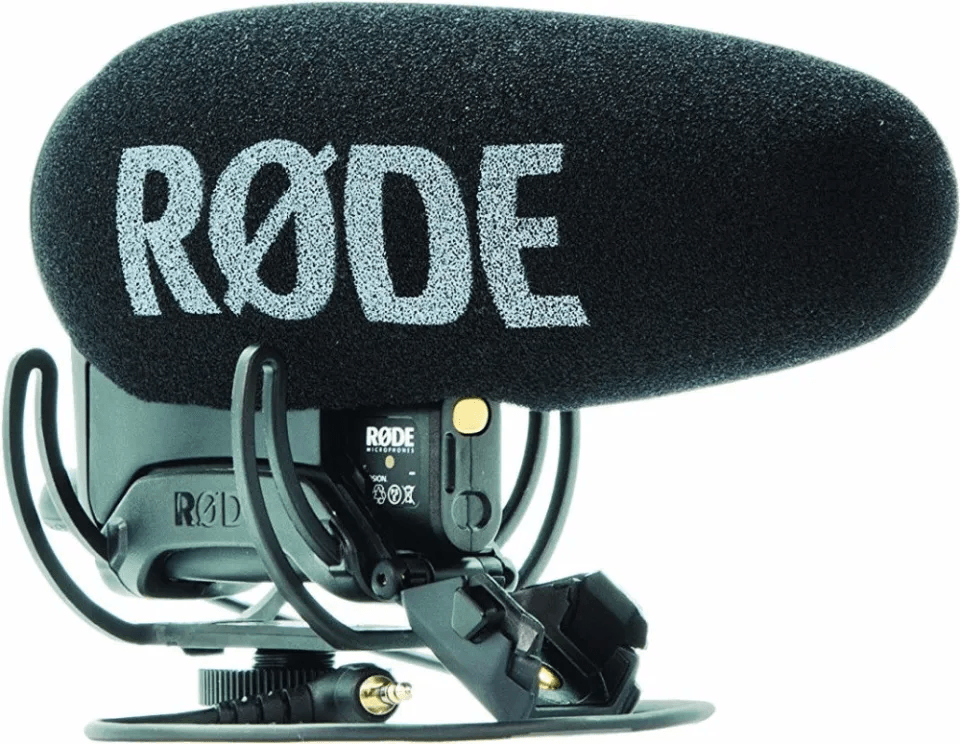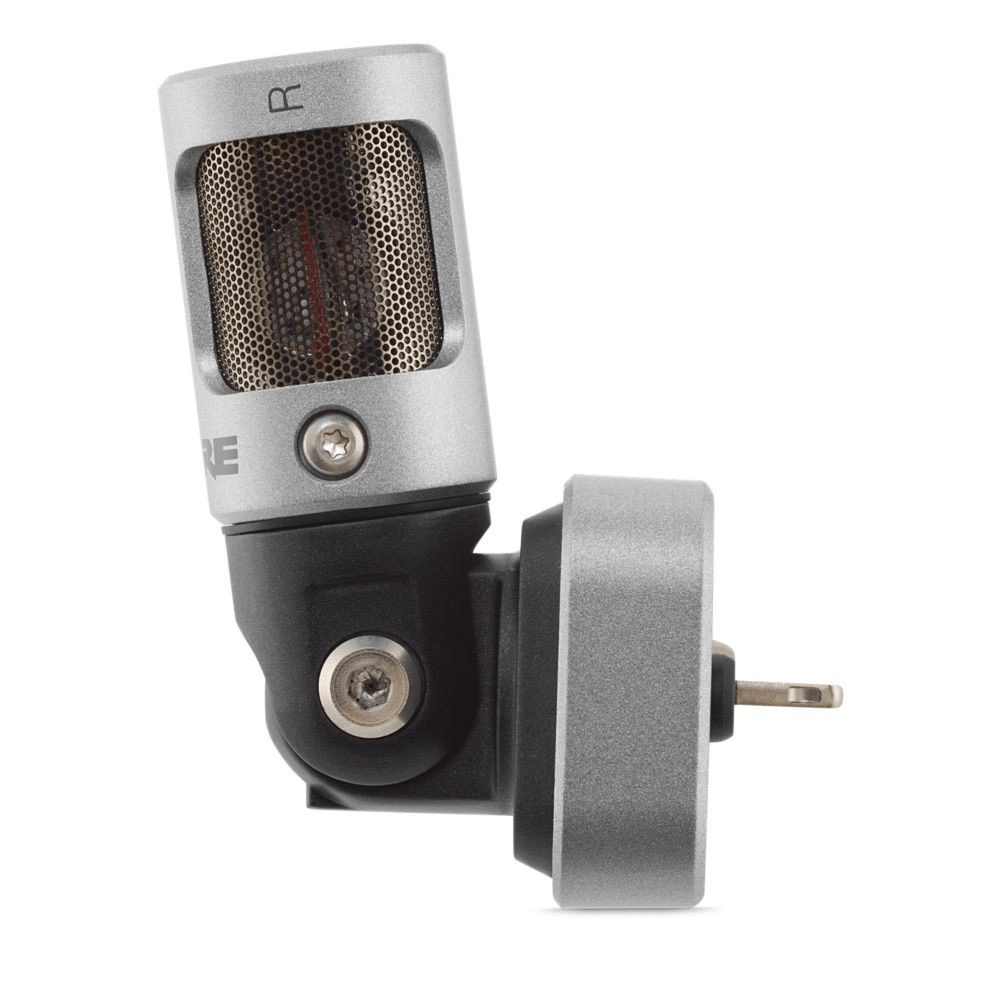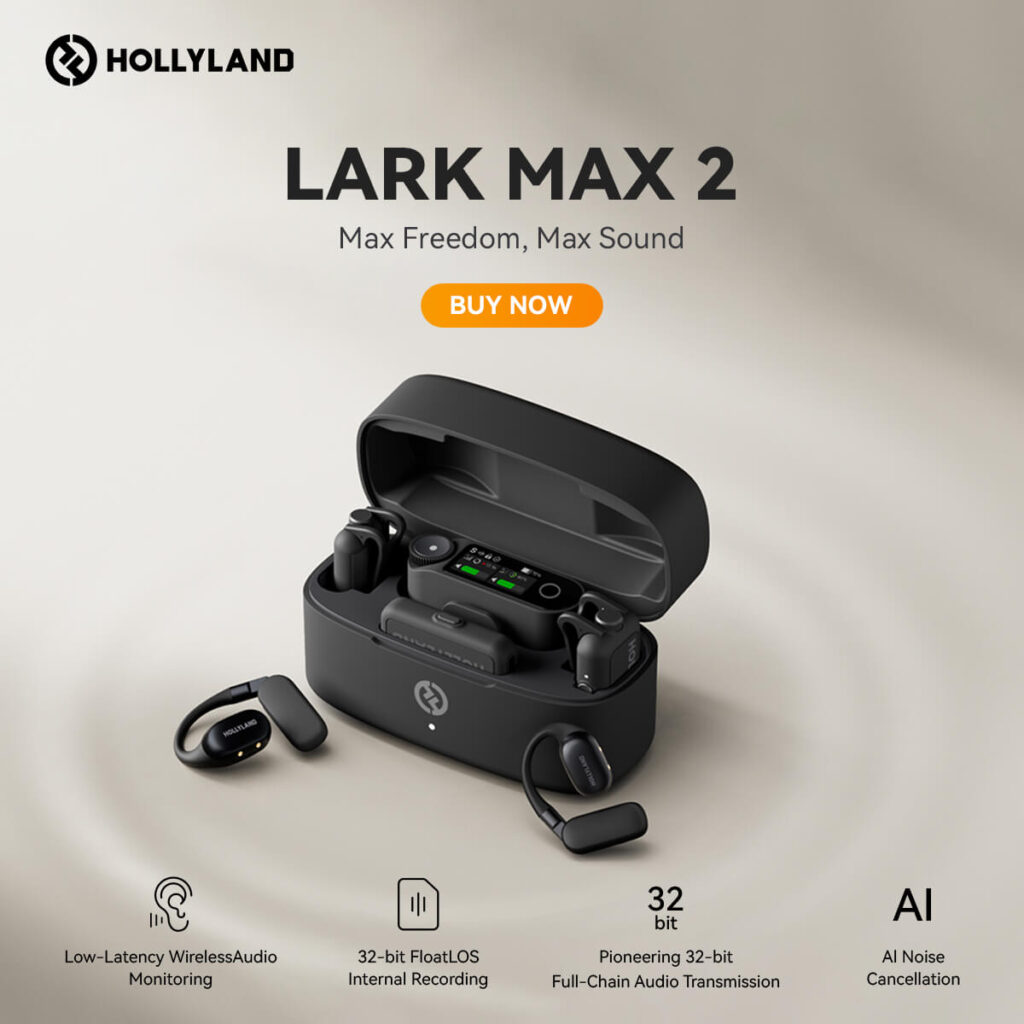Welcome to the world of impeccable audio for your MacBook Air! Whether you’re recording a podcast, chatting with colleagues, or capturing the soundtrack of your latest adventure, the right external microphone can elevate your audio game significantly. But with a myriad of options out there, how do you find the mic that sings in perfect harmony with your needs? Fear not! We’ve scoured the market and tested the top performers to bring you our picks for the best external microphones tailored for your MacBook Air. So, let’s dive in and find your sound soulmate!
When selecting the best external microphone for your MacBook Air, consider the following criteria to ensure you make a choice that suits your needs and enhances your audio experience.
- Compatibility: Look for microphones that are specifically compatible with Mac or offer plug-and-play connectivity with a USB or Thunderbolt port.
- Audio Quality: Evaluate the microphone’s ability to capture clear, crisp sound without interference. A higher bitrate and frequency response can contribute to better sound reproduction.
- Polar Patterns: Microphones come with different polar patterns like cardioid, omnidirectional, and bidirectional. Choose one that matches your recording environment; for instance, cardioid for podcasting or omnidirectional for group discussions.
- Design and Portability: Since it’s for a MacBook Air, lightweight and compact microphones have an advantage for easy transport alongside your laptop.
- Durability: Even if portability is key, you don’t want to compromise on build quality. A sturdy design will ensure your microphone withstands regular use.
- Ease of Use: Plug-and-play microphones with minimal setup requirements are typically more user-friendly, especially for those less technically inclined.
- Additional Features: Look out for extra features like headphone jacks for real-time monitoring, mute buttons, or onboard gain control, which can enhance usability and control.
By evaluating these features, you can find a microphone that offers convenience, quality, and reliability for your audio recording needs on your MacBook Air.
| Microphone | Price (Approx.) | Key Specs |
|---|---|---|
| Shure MV88+ Video Kit | $249 | – Digital stereo condenser microphone |
| – iOS and USB compatibility | ||
| – Multiple pickup patterns (adjustable with Shure app) | ||
| – 24-bit/48 kHz recording quality | ||
| – Includes tripod, phone clamp, and shoe-mount mic clip | ||
| Blue Yeti USB | $129 | – Tri-capsule array for multiple pattern selection |
| Microphone | (Cardioid, Bidirectional, Omnidirectional, Stereo) | |
| – Plug ‘n play with MAC and PC | ||
| – Onboard audio controls (volume, pattern selection, mute) | ||
| – 16-bit/48kHz resolution | ||
| Rode NT-USB Mini | $99 | – High-quality condenser capsule |
| – Cardioid pickup pattern | ||
| – Built-in pop filter | ||
| – USB-C connectivity | ||
| – 24-bit/48kHz recording quality | ||
| Audio-Technica | $149 | – Condenser microphone with USB output |
| AT2020USB+ | – Cardioid pickup pattern | |
| – Mix control to blend live signal and playback | ||
| – High-resolution 16-bit/48kHz recording | ||
| – Headphone jack with volume control | ||
| Apogee MiC Plus | $259 | – Professional cardioid condenser microphone capsule |
| – PureDIGITAL connection for sound quality up to 24-bit/96kHz | ||
| – No configuration required, plug ‘n play with Mac | ||
| – Blend button for direct latency-free monitoring | ||
| – Compact and portable design |
*Please be aware that prices are approximate and can vary.
Below is a brief explanation of the key specifications mentioned in the table:
Remember that the best microphone for you will depend on your specific needs, the type of recording you’ll be doing, and your budget.
Shure MV88+ Video Kit
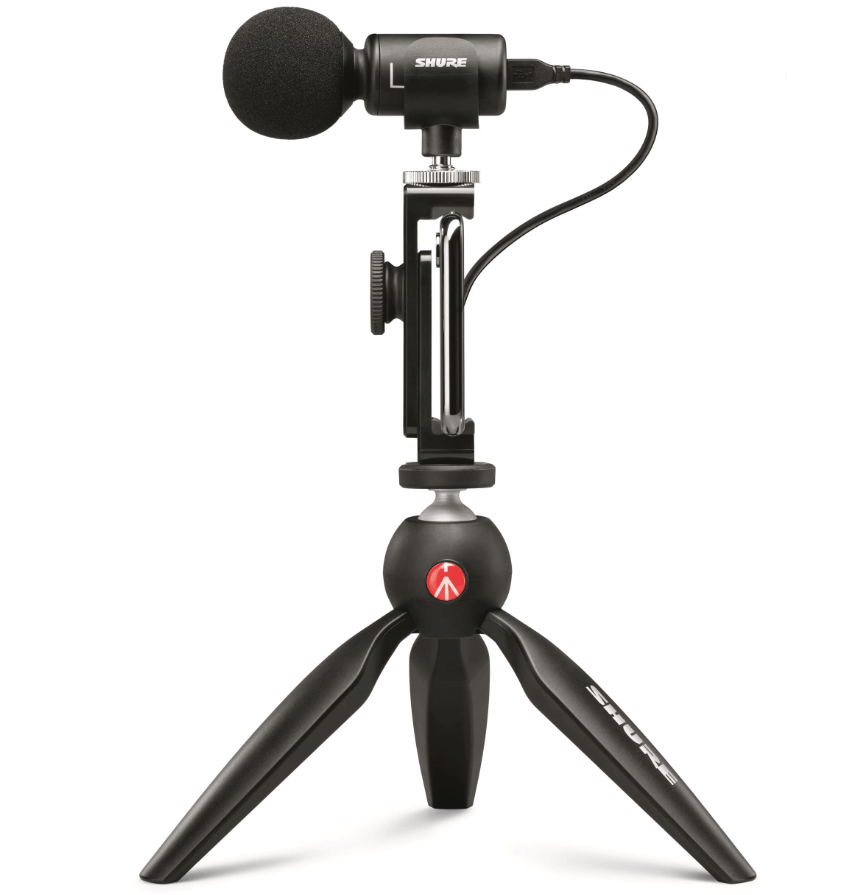
The Shure MV88+ Video Kit is not just a microphone; it’s a comprehensive solution for MacBook Air users looking to significantly upgrade their audio recording capabilities. Right out of the box, my impression of the MV88+ is that it’s built for the modern content creator. Its versatility shines in various contexts, whether you’re recording podcasts, interviews, music, or even if you’re using it for better audio in video calls.
With the MV88+, Shure continues its legacy of building professional-quality audio equipment. The mic feels sturdy and thoughtfully put together, with attention to detail that prosumers will appreciate. One of the features that I find most convenient is its direct digital connection to the MacBook Air, which not only simplifies setup but also ensures high-quality audio transfer without the noise issues that analog connections can sometimes introduce.
Specs:
- Type: Condenser microphone
- Polar Patterns: Cardioid, Bidirectional
- Connectivity: Digital via USB-C or Lightning
- Accessories: Windscreen, Manfrotto PIXI tripod, phone clamp, and shoe-mount mic clip
Pros:
- Excellent audio quality with clear, detailed sound capture.
- The inclusion of multiple directional patterns adds to its versatility.
- The physical build is solid, and the kit comes with useful accessories.
- Plug-and-play with MacBook Air, making it extremely easy to set up and use.
Cons:
- Price might be on the higher end for casual users.
- The form factor is compact but might require a learning curve for optimal placement and handling.
Price:
Prices for the Shure MV88+ Video Kit can vary, but it generally sits in the mid to high-end range for external microphones compatible with MacBook Air. In my opinion, while this microphone is an investment, the upgrade in audio quality, and the versatility you gain is absolutely worth the cost for anyone serious about their audio.
In conclusion, the Shure MV88+ Video Kit delivers on its promise of professional-grade audio recording. While it may require a bit of a budget stretch, the enhancement it brings to your MacBook Air’s audio capabilities can be a game-changer for many users, from podcasters and musicians to professionals who want to make a great impression during virtual meetings.
Blue Yeti USB Microphone

The Blue Yeti USB Microphone is a notable fixture in the world of podcasting, streaming, and home recording. Its popularity largely stems from its striking balance between simplicity and versatility. This microphone connects directly to your MacBook Air via USB, making it an accessible peripheral for professionals and novices alike.
My experience with the Blue Yeti has been largely positive. The microphone feels substantial and well-built straight out of the box. It provides clear, studio-quality sound capture thanks to its tri-capsule array. One of the things I appreciate most is its ease of use; you don’t need to be a sound engineer to achieve great results. Users have access to onboard audio controls, including a mute button, gain control, and a selection of polar patterns (cardioid, bidirectional, omnidirectional, and stereo) which makes it incredibly adaptable to various recording scenarios.
The Blue Yeti shines in scenarios ranging from voiceovers and podcasts to recording instruments and vocal performances. Its authenticity in capturing sound is impressive, especially in controlled environments. However, like many condenser microphones, it can be sensitive to background noise. Therefore, for best results, recording in a quiet space is recommended.
Specs:
- Transducer Type: Condenser, Pressure Gradient With USB digital output
- Polar Patterns: Cardioid, Bidirectional, Omnidirectional, Stereo
- Frequency Response: 20Hz – 20kHz
- Sample Rate: 48 kHz
- Bit Rate: 16-bit
- Controls: Mute button, volume control, gain control, and polar pattern selector.
Pros:
- Exceptional sound quality with the flexibility of pattern selection for different recording situations.
- Plug-and-play with MacBook Air, no drivers required, making it extremely user-friendly.
- Robust build quality and an aesthetic design that looks professional on camera.
- On-mic controls grant easy adjustments without fiddling with software settings.
Cons:
- Can pick up background noise due to its sensitivity, not ideal for noisy environments.
- Slightly bulky, which can be a downside for those with limited desk space or who need portability.
Price:
The Blue Yeti USB Microphone typically retails between $100 and $130, depending on the color and specific variant you opt for. Considering its features and sound quality, it holds significant value for money in my opinion. While there are cheaper options available, few match its blend of quality and control which justifies the price for anyone serious about their audio game.
Rode NT-USB Mini

The Rode NT-USB Mini is designed to offer studio-quality recording in a compact and easy-to-use package. It’s perfect for podcasters, streamers, musicians, and anyone in need of a reliable microphone that delivers clear, professional sound. What sets the NT-USB Mini apart is its robust build and the ability to produce high-quality audio without requiring complex setup or additional equipment. Its simplicity is matched by an elegance that ensures it doesn’t look out of place next to your sleek MacBook Air – appealing to a minimalist aesthetic while providing the audio fidelity necessary for a range of recording tasks.
Specs:
- Acoustic Principle: Condenser
- Polar Pattern: Cardioid
- Frequency Range: 20Hz – 20kHz
- Maximum SPL: 121dB
- Sample Rates: 48 kHz
- Bit Depth: 24-bit
- Output: USB-C Connector
- Included accessories: USB-C to USB-A cable, magnetic desk stand
Pros:
- The sound quality is exceptional for a mic of this size and price point. It captures voice clearly and without much background noise, thanks to its cardioid pickup pattern.
- It’s incredibly user-friendly; essentially plug-and-play with minimal fuss, which is perfect for MacBook Air users who value simplicity and convenience.
- The magnetic desk stand is not only sturdy but ingenious, allowing for easy attachment and positioning of the mic.
Cons:
- The lack of onboard gain control means you’ll need to adjust input levels through your Mac’s settings, which isn’t difficult but is an extra step.
- It’s more suited for desk use rather than handheld, so if you need something mobile, this might not be the best pick.
- Some users might prefer additional polar patterns for different recording scenarios, which this mic lacks.
Price:
Given the robust build and impressive audio performance, the Rode NT-USB Mini comes at a very reasonable price. It often falls somewhere around $100, making it an affordable yet high-quality option for improving your MacBook Air’s audio capture capabilities.
My Opinion:
In my opinion, the Rode NT-USB Mini is a little powerhouse that punches well above its weight. The sound quality truly impressed me – it manages to offer a richness and clarity that might even rival some of the more expensive mics I’ve experienced. Its design coherence with Apple products makes it not only functional but aesthetically pleasing next to your MacBook Air. While I would appreciate onboard gain control, the simplicity of it being ‘plug-and-play’ compensates for that minor inconvenience. All in all, for anyone needing a reliable and high-quality microphone without the fuss, this one is a stellar choice.
Audio-Technica AT2020USB+

The Audio-Technica AT2020USB+ is a versatile and widely acclaimed microphone that brings studio-quality audio to your MacBook Air. Right off the bat, its sleek design and sturdy build quality strike a chord with users looking for a blend of aesthetics and durability.
From my experience with this microphone, I’ve been thoroughly impressed with its ease of use. It’s a solid choice for podcasters, musicians, and anyone in need of clear and professional-sounding audio recordings. The AT2020USB+ stands out with its excellent sound reproduction, capturing the nuances of both vocals and instruments with great clarity.
The plug-and-play functionality is a huge plus—you literally take it out of the box, plug it into your MacBook Air, and you’re good to go. No complex setup, no hassle. The added features like the headphone jack with volume control and the mix control enable real-time monitoring and adjusting the microphone’s blend with pre-recorded audio, which is incredibly useful for multi-track recording projects.
Specs
- Microphone Type: Condenser
- Polar Pattern: Cardioid
- Frequency Response: 20Hz – 20kHz
- Sample Rate: 44.1/48 kHz
- Bit Depth: 16 bit
- Connection: USB
- Headphone Jack: Yes, with volume control
- Mix Control: Yes, to blend microphone and pre-recorded audio
Pros:
- Exceptional audio quality for clear, crisp recordings.
- Direct monitoring via a built-in headphone jack, avoiding latency.
- No-fuss setup; it’s compatible with your MacBook Air right out of the box.
- Strong build quality provides longevity and stability.
- Mix control is particularly beneficial for musicians or podcasters.
Cons:
- It’s on the higher end of the price spectrum, which might be a tad expensive for hobbyists.
- The microphone is sensitive to background noise, so make sure you’re in a quiet environment.
- Fixed cardioid pattern may not be suitable for all recording situations.
Price
As for the price, the Audio-Technica AT2020USB+ is generally priced around $150. It’s definitely an investment, but you’re paying for top-notch sound quality and build. Given what this microphone has to offer, I find it to be a high-value piece of equipment that can greatly enhance the audio experience for content creators and audio professionals alike.
Apogee MiC Plus

The Apogee MiC Plus strikes a formidable chord with MacBook Air users looking for a blend of portability, ease of use, and professional-grade quality. Upon my inspection, this little titan of sound impresses with its studio-quality cardioid condenser capsule, which has been a treat for both voice recordings and acoustic instrument sessions.
The hallmark of the MiC Plus lies in its simplicity merged with versatility. It doesn’t boast unnecessary bells and whistles, rather focuses on delivering clear, crisp audio that Apogee is revered for. Its plug-and-play nature is a godsend for those who want to jump straight to recording without fiddling with drivers or settings – a dream for the technologically averse or time-strapped creatives.
One particular aspect where it shines is its low latency monitoring. There’s barely any echo or delay to distract you while speaking or playing, which is essential for maintaining a natural flow and reducing post-editing efforts.
What truly sets it apart, though, is the gain control knob and blend feature on the device itself, giving users on-the-fly adjustments for the perfect balance between the computer audio and the microphone input. This tactile control elevates the user experience significantly, especially for those who appreciate instantaneous feedback and adjustments without stumbling through software controls.
Specs:
- Microphone Type: Condenser
- Polar Pattern: Cardioid
- Frequency Response: 20Hz to 20kHz
- Bit Depth/Sample Rate: Up to 24 bit/96 kHz
- Connectivity: USB
- Analog Output: 3.5mm headphone jack for latency-free monitoring
- Compatibility: macOS and Windows
Pros:
- Superior audio quality with a solid build
- No-latency headphone output for real-time monitoring
- Gain and blend control for precise audio tweaking
- Easy, straightforward setup, perfect for plug-and-play operation
Cons:
- Premium pricing might be a barrier for some
- Limited adjustability options for advanced users seeking granular control
- No additional polar patterns or multi-microphone settings for more complex recording setups
Price:
The Apogee MiC Plus is not the most budget-friendly option available. However, when it comes to external microphones compatible with the MacBook Air, you often get what you pay for. While the price sits on the higher end, it’s justified for those who are seeking an unparalleled blend of convenience and professional audio fidelity. It’s an investment, but for content creators serious about their craft, it’s absolutely worth it.
In conclusion, the Apogee MiC Plus isn’t just a mere external microphone; it’s an enhancement to your audio recording capabilities without spiraling into the complexities of a full-blown studio setup. Whether you’re podcasting, interviewing, recording music, or simply looking to give your video calls a clarity boost, this microphone is a top-tier choice that won’t disappoint those who prioritize quality and ease of use.
Conclusion:
Choosing the best external microphone for your MacBook Air can greatly enhance your audio recordings, whether for podcasts, music, or video calls. With the options we’ve discussed, you’re sure to find a mic that suits your needs and budget. Keep in mind factors such as sound quality, ease of use, and compatibility. Investing in the right microphone will not only improve your sound but also take your creative projects to the next level.
If you’re looking for flexible audio recording on your Macbook Air, a wireless lavalier microphone offers portability and crystal-clear sound quality. Ideal for podcasts, video calls, or streaming, it effortlessly enhances professional-quality audio without the hassle of wires.
Best Seller
Sale
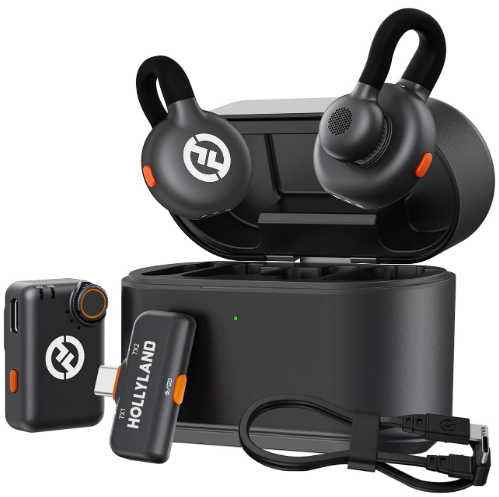
Hollyland LARK M2S – Wireless Clip-on Microphone
- 7g Lightweight, Titanium Clip, Discreet Design
- Clear sound with 24-bit/48kHz, 70dB SNR, 116dB SPL
- Noise Cancellation & 300m Long-Range Stability
- Works with Camera/iPhone/Android/Laptop
- Perfect for Content Creators, Online-Teaching, Streaming
$139
$159
FAQs:
- Do I need any additional software to use an external microphone with my MacBook Air?
Typically, no additional software is needed. Most external microphones are plug-and-play, meaning they should work as soon as you connect them to your MacBook Air. - Can I use these microphones for both recording music and having calls?
Yes, most high-quality external microphones are versatile enough to deliver improved audio for a variety of uses, from recording music to professional calls and streaming. - How do I ensure my MacBook Air recognizes the external microphone?
Once connected, go to System Preferences > Sound and select the external microphone as the input device. Ensure the mic is selected for any specific apps you’re using as well.





























.png)



.png)


